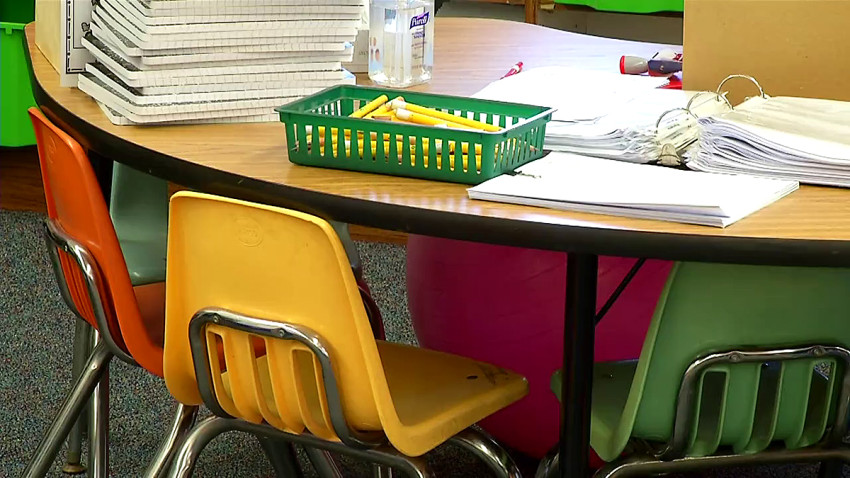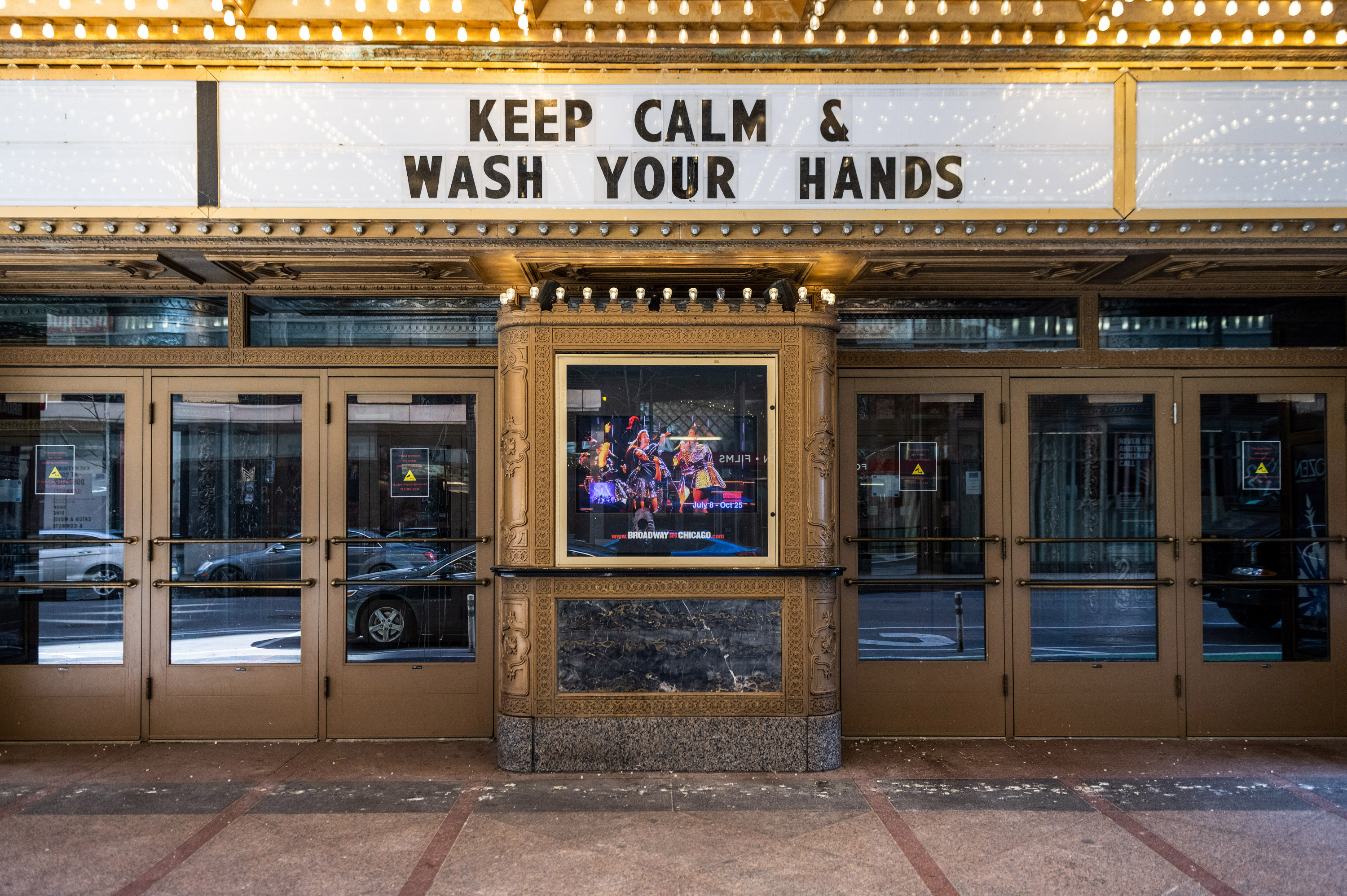Illinois Gov. J.B. Pritzker on Tuesday released long-awaited guidance for schools across the state as questions swirl over how instruction will resume in the fall.
“Classroom learning provides necessary opportunities for our students to learn, socialize, and grow. The benefits of in-person instruction can’t be overstated,” Pritzker said in a statement. “Today ISBE, IBHE, and ICCB are issuing guidance that will serve as baseline public health requirements and expectations for the return of in-person learning this fall in P-12 schools and higher education, including all public school districts, non-public schools, colleges and universities. In close consultation with IDPH, infectious disease experts at the University of Illinois at Chicago, and other public health professionals, the guidance focuses on keeping students, teachers and families healthy and safe. It recognizes that Illinois is a diverse state, and school districts and institutions of higher education across Illinois will face unique challenges in how they’ll operate within their communities.”
The guidance will allow students to return to classrooms in the upcoming school year, but with changes. In addition, the Illinois Emergency Management Agency will provide public K-12 districts in Illinois with 2.5 million cloth face masks.
How the guidance is implemented will depend largely on each individual district's plan.
Here's a look at the guidelines:
K-12 Schools
- Require use of appropriate personal protective equipment (PPE), including face coverings
- Prohibit more than 50 individuals from gathering in one space;
- Require social distancing whenever possible
- Conduct symptom screenings and temperature checks or require self-certification that individuals entering school buildings are symptom free
- Increase schoolwide cleaning and disinfection
"Each school district will determine how to implement the guidance based on its unique student enrollment, school facilities, staffing, transportation, and technological capacity," the guidance states. "ISBE strongly encourages schools and districts to provide in-person instruction for all students, especially those under age 13, to ensure children have rich instructional environments."
Read more here.
Higher Education
Schools will need to develop plans to limit traffic flow, increase cleaning of public spaces, and stagger schedules for the use of laboratories, auditoriums and other group facilities, according to the guidance. Small-group sessions and meetings must also adhere to social distancing guidelines.
Still, colleges dormitories, cafeterias, libraries, bookstores, and other amenities of college life will be allowed for students.
“The path to personal success runs right through our schools, classrooms, colleges and universities. A good education means a good future for you and your families. When the economy rebounds, we want our students to be prepared for those jobs and that means--stay the course and stay in school,” Ginger Ostro, IBHE Executive director, said in a statement.
Read more here.
Community Colleges
- In person education will require face coverings to be worn by faculty, staff and students.
- Community colleges should conduct health screenings on employees, students and visitors before each campus visit.
- Community colleges should take additional measures to ensure social distancing and safety as determined by the features of spaces, learning methods, and other factors.
"Each community college should consider the needs of vulnerable staff or students when administering guidelines," the guidance states.
Read more here.
Pritzker signed legislation last week that changes the school code to give districts more options for remote learning during the COVID-19 pandemic. That includes “blended learning,” in which students receive instruction both remotely and in person.
Already, a suburban school district announced a hybrid approach to getting kids back into classrooms this fall, giving parents three different learning options to choose from amid the ongoing coronavirus pandemic.
Students in Kankakee School District 111 will be able to choose between having classes completely online, a “hybrid” program with students only attending classes twice a week and doing the rest of their learning online, or attending classes five days a week, but in different parts of school buildings.
Earlier this week, Wisconsin released guidance for its 421 public schools, saying flexibility is key.
The Department of Public Instruction said school districts should be prepared to shift between in-person, physically-distanced and virtual learning as they deal with changing aspects of COVID-19.
As new best practices develop, health and safety recommendations may change, Wisconsin officials said.
Chicago Public Schools said earlier this month that it planned to develop guidelines "if public health officials determine it is safe to reopen in the fall."
“Chicago Public Schools is eager to open its doors to students as soon as it is safe to do so, and the district is gathering feedback from families and staff to inform draft reopening guidelines for our schools," the district said in response to the governor's announcement. "We will continue to work closely with CDPH and the city of Chicago to ensure we are able to open safely. Nothing is more important than the safety of our students, staff and families, and we remain committed to widespread engagement to ensure our plan for reopening supports the diverse needs of our entire school community.”
Still Chicago Teachers Union President said the guidelines released Tuesday are "too vague to serve as a useful road map for CPS."
"In short, we’re going to be required to figure out many of the most critical features of school work for ourselves, in bargaining," Jesse Sharkey said in a statement. "We are not just educators. Thousands of us are also CPS parents. While we very much want to get back to classes, the safety of our students, their families and the educators who serve them is our top priority. Safe resumption of in-person learning will require respectful dialogue with all stakeholders—including parents, community members, and the unions representing CPS employees."
Pritzker's latest guidance comes just days before Illinois is set to enter phase four of its reopening plan.
Phase four of the "Restore Illinois" plan allows for the reopening or expansion of several industries, including indoor dining at restaurants, health and fitness, movies and theaters, museums and zoos and more. This next phase also increases the size of gatherings that are allowed from 10 people to a maximum of 50 people.
All four regions of Illinois are on track to enter phase four on Friday, Pritzker's office said this week, with the state's average 7-day case positivity rate falling to 2.5 percent as of Saturday.
Pritzker had already released safety guidelines and regulations for various industries, including rules for indoor dining, indoor and outdoor recreation, meetings and events, museums, zoos, movie theaters, sports and more.
The state has been in phase three of the "Restore Illinois" plan since late May.



